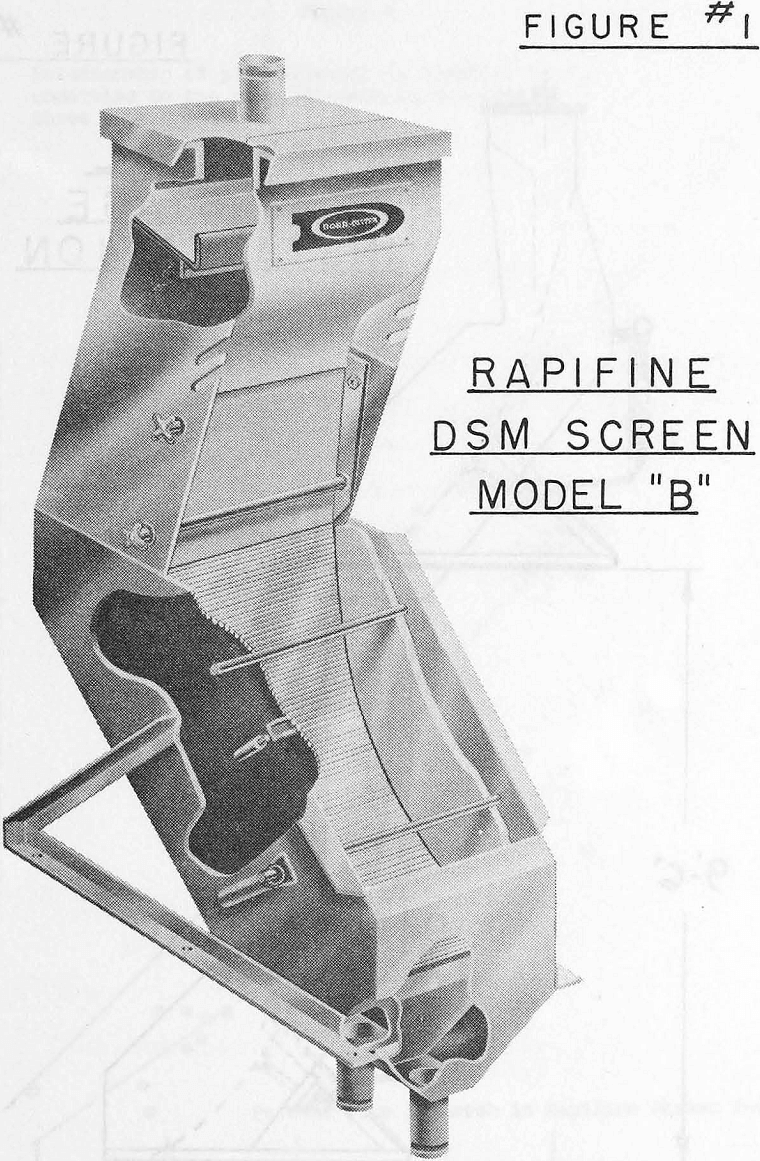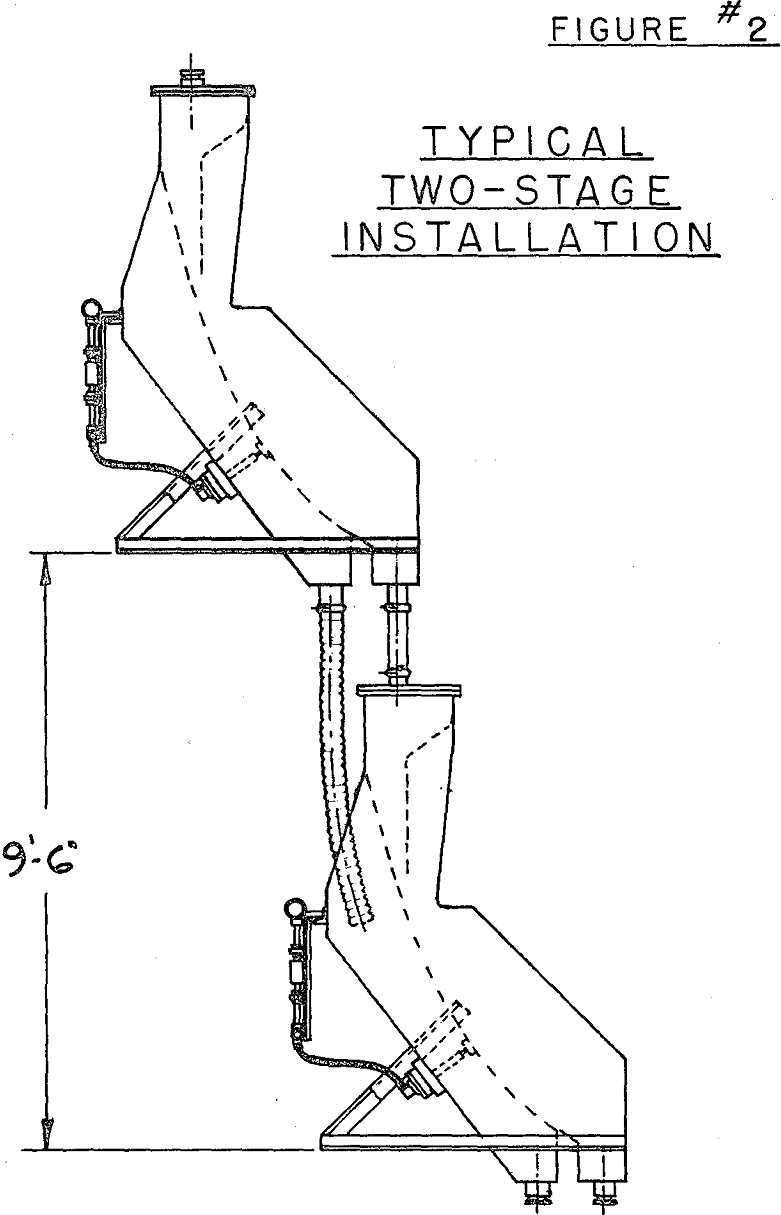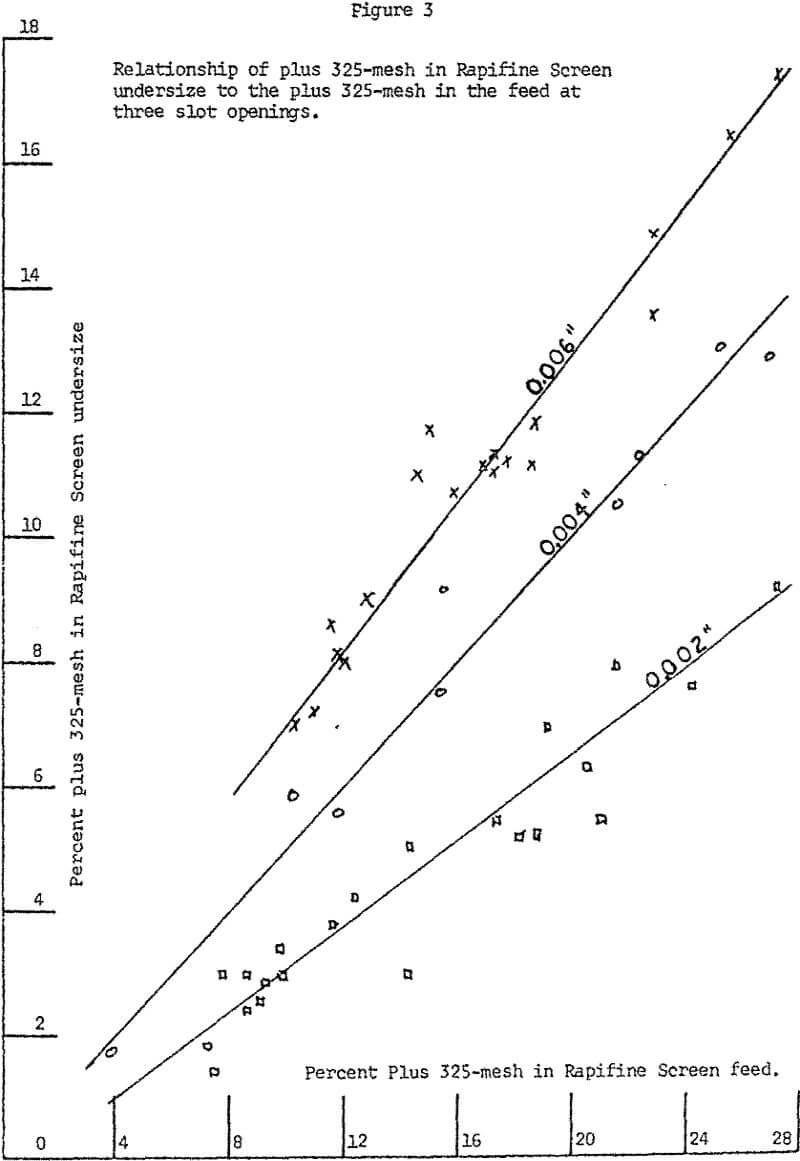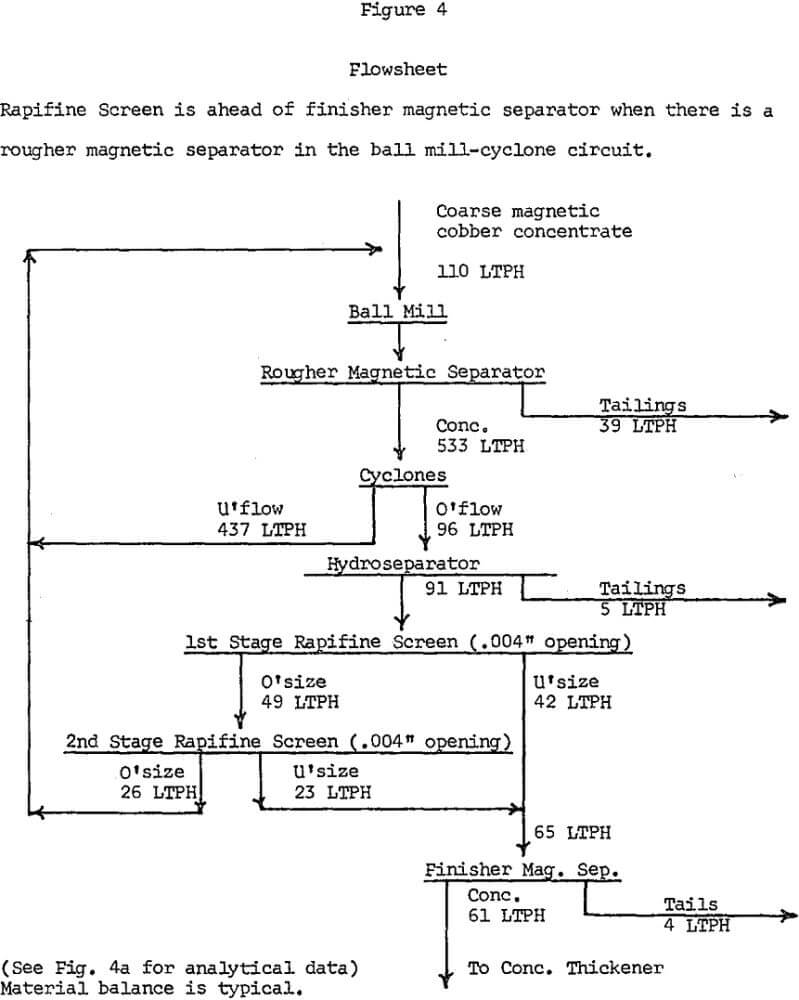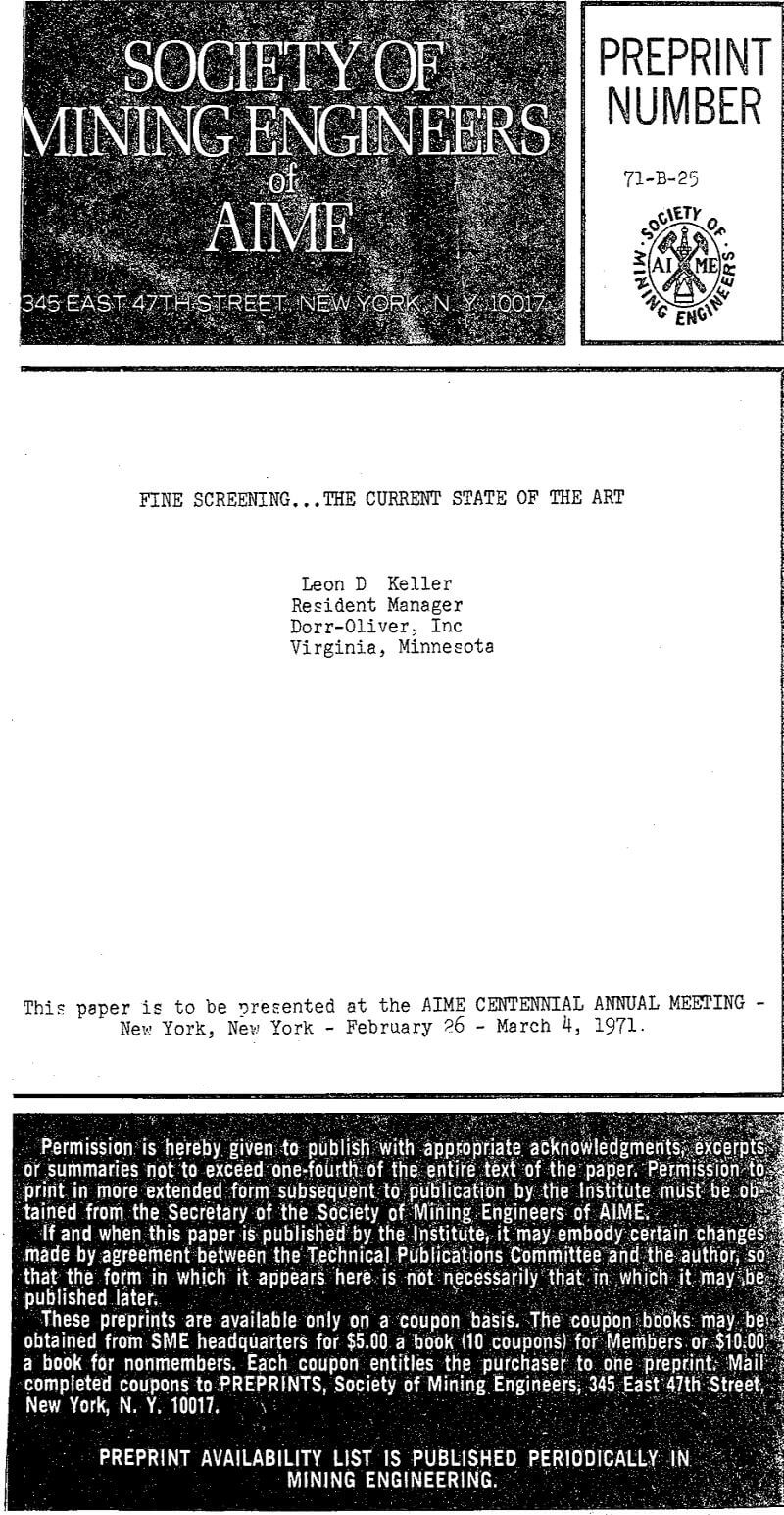Table of Contents
Fine screening, as discussed in this paper, pertains to the use of the Rapifine DSM Screen to make a 65 to 325-mesh separation at production tonnages. The greatest number of Rapifine Screen installations are in magnetic taconite plants where the unusual relationship between the grinding mill, cyclone classifier, magnetic separators, and fine screens makes the Rapifine Screen application unique.
Machine Design & Installation
Current design of a 2′ wide, 45°, Model B, Rapifine DSM Screen. The housing is self-supporting and rubber lined in all areas of pulp contact. The rapper mechanism is a pneumatic vibrator that has been modified to act as a jolter. A solid state timer controls the frequency of raps to between 5 and 20 raps per minute. Approximately 0.4 cfm at 30 psig of clean, dry air is required to operate each rapping mechanism. Normally, an air filter-pressure regulator-oiler is supplied with each bank of screens. An air drier may also be required in some locations.
To limit the amount of the coarse material in the feed to fine screens, the Hydrocyclone is retained in the circuit as a scalping-device. It is adjusted to make a separation two to four meshes coarser than the separation that would be required without fine screens. The coarser separation minimizes the heavy media effect, while removing much of the abrasive coarse material from the screen feed.
Magnetic Taconite Application
The interrelationship of fine screens with the grinding circuit and magnetic separators makes the location of the Rapifine Screens in magnetic taconite applications critical. Coarse gangue or low grade coarse middlings must be removed from the circuit prior to screening. Otherwise, this barren, waste material returns to the grinding circuit where it consumes grinding power.
Two possible locations in two different basic flowsheets exemplify this, have rougher magnetic separators on the ball mill discharge where the ground new feed, as well as the circulating load, is magnetically concentrated. Each flowsheet has a Hydroseparator to dewater and deslime the cyclone overflow, followed by a finishing magnetic separator.
The Rapifine Screens could be added either ahead of or following the finishing magnetic separators. Tests showed that when there is a rougher magnetic separator in the grinding circuit, there is no significant advantage to either location of the Rapifine Screens.
A certain increase in feed tonnage is necessary to produce sufficient screen oversize to effect the circuit. This appears to be in the order of 5 to 8%. Between 15 and 20% increase in feed tonnage shows a drop in concentrate grade, hence, the upper limit of the circuit.
The Rapifine Screens were installed on the primary desliming cyclone underflow. The feed density of the ball mill cyclones was allowed to increase from 45 to 50% making a separation of approximately 12% plus 150-mesh. The oversize from the second stage screen is returned to the ball mill. The feed to the flotation circuit now contains approximately 5% plus 150-mesh.
Copper Concentrator
A novel application of the Rapifine Screen in a copper concentrator is that of a monitor on the cyclone overflow. A 1′ wide Rapifine Screen receives a portion of the cyclone overflow. This material is normally 5-7% plus 100-mesh. However, if an apex valve plugs, or the grindability changes suddenly, the plus 100-mesh material can increase considerably before it is detected. The resultant coarse material in the conditioners and flotation cells has been the cause of shutdowns for its removal.
